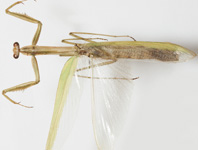Abstract
The genus Eumorphobotys Munroe & Mutuura (1969) comprises two species that have been found in southern China. Two new species, E. concavuncus sp. n. and E. horakae sp. n., are described from southwest China. In appearance, this genus also resembles Calamochrous Lederer, 1863, Sclerocona Meyrick, 1890, Prodasycnemis Warren, 1892, and Loxoneptera Hampson, 1896. In order to evaluate the generic placement of the new taxa, the phylogeny of Eumorphobotys species and several species representing the potential related genera based on sequence data of COI, 16S rRNA, EF-1α and 28S rRNA gene regions were reconstructed and the taxonomy of these genera based on morphological characters was re-assessed. The results are as follows: (i) the monophyly of Eumorphobotys is well supported; (ii) Loxoneptera is paraphyletic. Two species of Calamochrous were recovered as terminal lineages within Loxoneptera; (iii) the clade comprising species of Loxoneptera and Calamochrous is in the sister position to Eumorphobotys with a robust support; (iv) species of Loxoneptera and Calamochrous resemble Eumorphobotys in the wing shape and the porrect labial palpus but differ in genitalia structures. The relationships of these genera are discussed; (v) two new species, E. concavuncus sp. n. and E. horakae sp. n., are described, Calamochrous obscuralis (Caradja, 1925) syn. n. is synonymized with E. eumorphalis (Caradja, 1925) based on the male genitalia and the adults and genitalia of all species (except the female of E. horakae sp. n.) are illustrated.
References
Caradja, A. (1925) Ueber Chinas Pyraliden, Tortriciden, Tineiden nebst kurze Betrachtungen, zu denen das Studium dieser Fauna Veranlassung gibt (Eine biogeographische Skizze). Academia Romana Memoriile Sectiunii Stiintifice, Series 3, 3 (7), 257–383, pls. 1–2.
Hundsdoerfer, A.K., Rubinoff, D., Attié, M., Wink, M. & Kitching, I.J. (2009) A revised molecular phylogeny of the globally distributed hawkmoth genus Hyles (Lepidoptera: Sphingidae), based on mitochondrial and nuclear DNA sequences. Molecular Phylogenetics and Evolution, 52, 852–865.
https://doi.org/10.1016/j.ympev.2009.05.023Klots, A.B. (1970) Lepidoptera. In: Tuxen, S.L. (Ed.), Taxonomist’s glossary of genitalia in insects. Second revised and enlarged edition. Munksgaard, Copenhagen, pp. 115–130.
Knölke, S., Erlacher, S., Hausmann, A., Miller, M.A. & Segerer, A.H. (2005) A procedure for combined genita-lia dissection and DNA extraction in Lepidoptera. Insect Systematics & Evolution, 35, 401–409.
https://doi.org/10.1163/187631204788912463Kristensen, N.P. (2003) Skeleton and muscles: adults. In: Kristensen, N.P. (Ed.), Lepidoptera, moths and butterflies. Vol. 2. Evolution, systematics, and biogeography. Handbook of Zoology IV (35). Walter de Gruyter, Berlin & New York, pp. 39–131.
https://doi.org/10.1515/9783110893724.39Lee, S. & Brown, R.L. (2008) Phylogenetic relationships of Holarctic Teleiodini (Lepidoptera: Gelechiidae) based on analysis of morphological and molecular data. Systematic Entomology, 33, 595–612.
https://doi.org/10.1111/j.1365-3113.2008.00430.xLi, H.H. & Zheng, Z.M. (1996) Methods and techniques of specimens of Microlepidopera. Journal of Shaanxi Normal University, Natural Science Edition, 24 (3), 63–70.
Maes, K.V.N. (1995) A comparative morphological study of the adult Crambidae (Lepidoptera, Pyraloidea). Bulletin et Annales de la Société Royale Belge d'Entomologie, 131, 383–434.
Munroe, E.G. & Mutuura, A. (1969) Contributions to a study of the Pyraustinae (Lepidoptera: Pyralidae) of temperate East Asia V. The Canadian Entomologist, 101, 299–305.
https://doi.org/10.4039/Ent101299-3Munroe, E.G. (1976) Pyraloidea Pyralidae comprising the subfamily Pyraustinae tribe Pyraustini (part). In: Dominick, R.B. (Eds.), The Moths of America North of Mexico including Greenland. 13.2. Classey EW Ltd and The Wedge Entomological Research Foundation, London, pp. 1–78, pls. 1–4.
Posada, D. (2008) jModelTest: phylogenetic model averaging. Molecular biology and evolution, 25 (7), 1253–1256.
https://doi.org/10.1093/molbev/msn083Robinson, G.S. (1976) The preparation of slides of Lepidoptera genitalia with special reference to the Microlepidoptera. Entomologist’s Gazette, 27, 127–132.
Ronquist, F., Teslenko, M., van derMark, P., Ayres, D.L., Darling, A., Höhna, S., Larget, B., Liu, L., Suchard, M.A. & Huelsenbeck, J.P. (2012) MrBayes 3.2: efficient Bayesian phylogenetic inference and model choice across a large model space. Systematic biology, 61 (3), 539–542.
https://doi.org/10.1093/sysbio/sys029Shen, G.P. & Tang, G.Y. (1992) Pyralidae. In: Department of Forestry of Hunan Province (Ed.), Iconography of Forest Insects in Hunan China. Hunan Science and Technology Publishing House, Changsha, pp. 706–728.
Simon, C., Buckley, T.R., Frati, F., Stewart, J.B. & Beckenbach, A.T. (2006) Incorporating molecular evolution into phylogenetic analysis, and a new compilation of conserved polymerase chain reaction primers for animal mitochondrial DNA. Annual Review of Ecology, Evolution, and Systematics, 37, 545–579.
https://doi.org/10.1146/annurev.ecolsys.37.091305.110018Song, S.M. (1993) Lepidoptera: Pyralidae and Zygaenidae. In: Huang, C.M. (Ed.), Animals of Longqi Mountain. China Forestry Press, Beijing, pp. 414–473.
Song, S.M. & He, M.S. (1997) Lepidoptera: Pyralidae. In: Yang, X.K. (Ed.), Insects of the Three Gorge Reservoir Area of Yangtze River. Vol. 2. Chongqing Press, Chongqing, pp. 1096–1220.
Song, S.M. (2001) Pyralidae. In: Huang, B.K. (Ed.), Fauna of Insects in Fujian Province of China. Vol. 5. Fujian Science and Technology Press, Fuzhou, pp. 101–226.
Stamatakis, A. (2014) RAxML version 8: a tool for phylogenetic analysis and post-analysis of large phylogenies. Bioinformatics, 30, 1312–1313.
https://doi.org/10.1093/bioinformatics/btu033Tamura, K., Stecher, G., Peterson, D., Filipski, A. & Kumar, S. (2013) MEGA6: molecular evolutionary genetics analysis. Version 6.0. Molecular Biology and Evolution, 30 (12), 2725–2729.
https://doi.org/10.1093/molbev/mst197Thompson, J.D., Higgins, D.G. & Gibson, T.J. (1994) CLUSTAL W: improving the sensitivity of progressive multiple sequence alignment through sequence weighting, position-specific gap penalties and weight matrix choice. Nucleic Acids Research, 22 (22), 4673–4680.
https://doi.org/10.1093/nar/22.22.4673Tiansen, X. (1985) Study on bionomics of Eumorphobotys obscuralis. Journal of Subtropical Forestry Science and Technology, 3, 55–56.
Wahlberg, N. & Wheat, C.W. (2008) Genomic outposts serve the phylogenomic pioneers: designing novel nuclear markers for genomic DNA extractions of Lepidoptera. Systematic Biology, 57 (2), 231–242.
https://doi.org/10.1080/10635150802033006Wang, P.Y. (1980) Lepidoptera. Pyralidae. Economic Insect Fauna of China. Science Press, Beijing, 229 pp.
Wang, J.S., Song, S.M., Wu, Y.Y. & Chen, T.M. (2003) Fauna of Pyralidae of Wuyishan Nature Reserve in China. China Science and Technology Press, Beijing, 328 pp.
Yamanaka, H., Yoshiyasu, Y. & Sasaki, A. (2013) Pyraloidea. In: Nasu, Y., Hirowatari, T. & Kishida, Y. (Eds.), The Standard of Moths in Japan. Vol. IV. Gakken Education Publishing, Tokyo, pp. 60–84, 314–478.
Zhang, D.D. (2003) A Taxonomic Study on the Tribe Pyraustini from the Mainland of China (Lepidoptera: Crambidae: Pyraustinae). Nankai University, Tianjin, 279 pp.
Zhang, D.D. (2009) Pyraustinae. In: Li, H.H. & Ren, Y.D. (Eds.), Insect Fauna of Henan. Science Press, Beijing, pp. 192–237.

